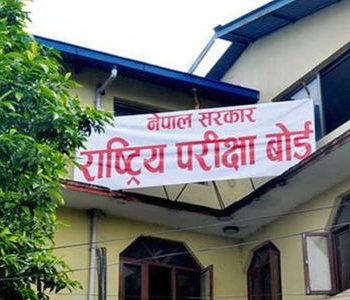Banks reduce interest rates again amid excess liquidity; loan demand remains low

KATHMANDU: Banks and financial institutions in Nepal have once again reduced interest rates on deposits and loans as excess liquidity continues to accumulate due to sluggish demand for credit. With the revised interest rates for Kartik (mid-October to mid-November), deposit rates have dropped, leading to automatic reductions in loan rates. The drop comes as banks face a growing surplus of investable funds, with loan demand failing to meet expectations.
According to the latest data, despite the increase in deposits, the average interest rate on one-year fixed-term personal deposits has decreased by 0.245 percentage points compared to the previous month. In Ashwin (mid-September to mid-October), the average deposit rate stood at 6.396 percent, which has now fallen to 6.151 percent for Kartik.
Banks Struggling with Excess Liquidity
Out of 20 commercial banks, 11 have slightly reduced deposit interest rates for Kartik, while eight have kept the rates unchanged. Only one bank has marginally increased rates. This overall reduction in interest rates, despite steady deposits, indicates the banking sector’s struggle to balance liquidity as credit demand remains low.
The reduction in deposit rates is particularly concerning for depositors, who are now facing lower returns on their savings. For Kartik, the interest rates on regular savings accounts range from a minimum of 3 percent to a maximum of 4.5 percent.
A report by the Nepal Rastra Bank indicates that loan interest rates have continued to decline in response to the deposit rate cuts. As of Bhadra (mid-August to mid-September), the average loan interest rate of commercial banks stood at 9.52 percent, a sharp decrease from 12.23 percent in the same period last year. Since mid-June, loan rates have dropped to single digits, with the weighted average loan interest rate in mid-July falling to 9.93 percent—the lowest in 32 months.
Sluggish Demand in Key Sectors
Despite the drop in interest rates, the expected surge in credit demand has not materialized. According to industry leaders, while there has been a slight increase in consumer and stock market loans, key sectors like industry and construction have not seen a rise in loan demand. Rajesh Kumar Agrawal, President of the Confederation of Nepalese Industries, expressed disappointment, noting that political stability under the coalition government of Nepali Congress and CPN-UML was expected to lead to more dynamic economic activities.
“However, almost three months into the new government, no effective measures for economic improvement have been implemented. As a result, industries and the construction sector are unable to plan for expansion, leading to lower-than-expected loan demand,” Agrawal said. He further explained that market demand has remained stagnant, with industries operating below full capacity.
The recent floods and landslides in Ashwin have also contributed to the economic slowdown, directly impacting market demand and further delaying potential recovery in the industrial sector.
Hope for Recovery After Festive Season
Despite the challenges, there is hope for recovery after the Dashain and Tihar festivals. Santosh Koirala, Vice President of the Nepal Bankers’ Association, expressed optimism that credit demand will gradually pick up following the festive season. “Compared to last year, we saw slight improvements in loan demand in the first two-and-a-half months of this year. However, the severe floods and landslides in Ashwin caused significant damage, and the extent of the economic impact will determine future loan demand,” Koirala said.
With interest rates at their lowest levels in months, Koirala believes there is a strong likelihood that credit demand will increase after Tihar.
Surplus Liquidity Remains a Concern
Despite the low demand for loans, the banking and financial sector continues to grapple with excess liquidity. The average credit-deposit (CD) ratio remains at 78.44 percent, indicating that banks have ample funds but limited opportunities for loan disbursement. Banks currently hold NPR 6.615 trillion in deposits, while loan disbursement stands at NPR 5.276 trillion.
According to Nepal Rastra Bank’s guidelines, banks can lend up to 90 percent of their total deposits, meaning they still have over NPR 677 billion available for lending. Last year, banks maintained substantial liquidity, with surplus funds reaching nearly NPR 500 billion by mid-July.
Outlook Remains Uncertain
Looking ahead, financial experts suggest that the trend of excess liquidity and low credit demand may continue. While credit expansion typically increases after the festive season, the ongoing economic challenges, coupled with the government’s slow pace of capital expenditure, may hinder a full recovery.
Nepal Rastra Bank spokesperson Ramu Poudel emphasized the need for government intervention to boost capital expenditure, which could help stimulate loan demand. “In the past three months, government revenue has grown by about 17 percent, but capital expenditure has only increased by 8 percent. The government must take initiative to increase capital spending, which will lead to increased demand for loans,” Poudel said.
As the banking sector navigates this challenging environment, the focus will remain on whether economic activities pick up in the coming months, bringing much-needed relief to both banks and borrowers alike.













Facebook Comment